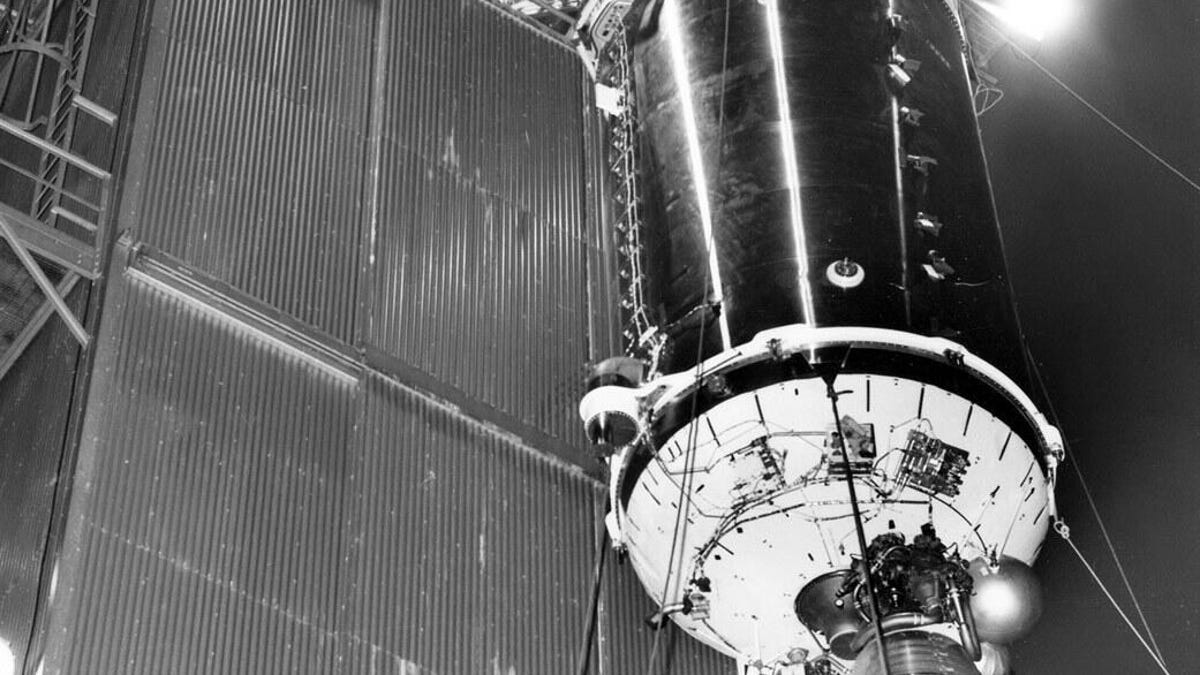NASA says mysterious 'mini-moon' is actually a 1960s rocket booster
Space jewel? More like space junk.

This photo from 1964 shows a Centaur upper-stage rocket. Space object 2020 SO is one of these.
Welcome back, Surveyor 2 Centaur rocket booster. We just got a new chapter in a bittersweet space saga that involves a fiery launch, a doomed moon mission and decades of space wanderings.
A rocket booster NASA used to launch the Surveyor 2 lunar lander in 1966 has returned to us for a temporary spin as a mini-moon in orbit around Earth. When scientists spotted it in September, they named it 2020 SO. On Wednesday, NASA announced the strange object has been positively identified as the '60s booster.
While the booster did its job admirably back in 1966, the lander didn't survive a crash landing on the moon's surface.
The booster's specific orbit around the sun tipped astronomers off that it probably wasn't an asteroid, one of the many space rocks that zip around our cosmic neighborhood. Some sleuthing tracked the booster back to near Earth in 1966.
Telescope observations have now revealed the stainless steel composition of 2020 SO. This cosmic detective work involved comparing spectrum data on the enigmatic object with data gathered on a known Centaur rocker booster that's been floating around in space since 1971. It was a match.
The object has attracted a lot of interest due to the mystery surrounding it and the fact that it was captured into an Earth orbit that makes it a cute little visiting mini-moon. The Virtual Telescope Project livestreamed 2020 SO when it came in close to Earth on Nov. 30.
The Centaur booster will stick around with us for a few months, but is expected to continue its space adventures back in orbit around the sun sometime in March 2021. At which point we can all say, "Goodnight, Centaur. Goodnight, mini-moon."

